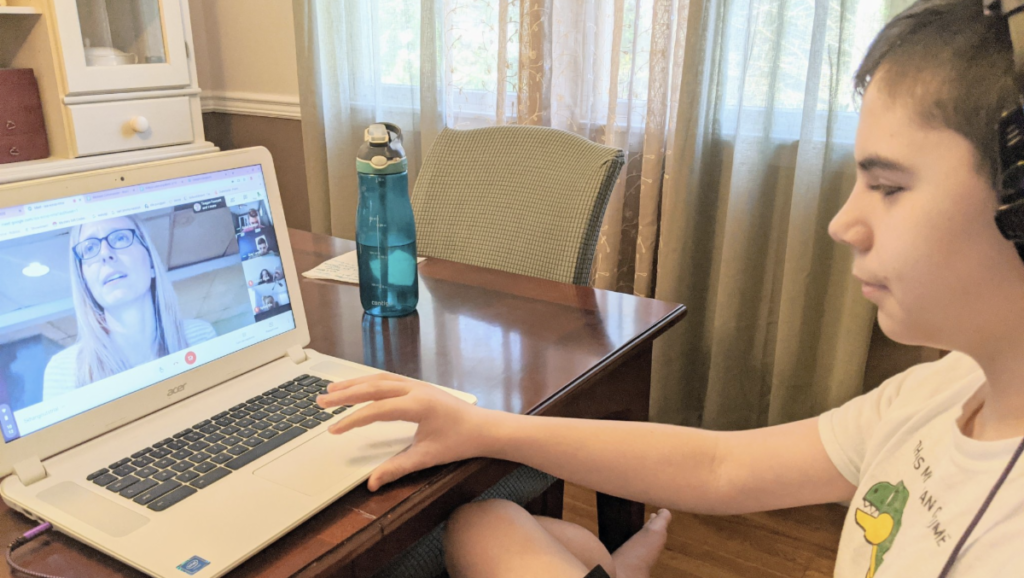Ever since Middletown Township Public Schools (New Jersey) joined the Future Ready Schools® (FRS) network in 2015, the district has prioritized personalized learning for both its students and staff. At that time, district leaders never expected they would draw on that forward-thinking approach and commitment to innovative practices to educate students during a worldwide health crisis—or that such a crisis would reveal underlying equity issues in their district.
“These are challenging times, but I would be remiss if I did not say our work in collaboration with Future Ready has strongly positioned us to be successful in launching virtual learning during this pandemic,” says William George, superintendent of Middletown Township Public Schools.
Like many districts across the nation, Middletown Township transitioned its nearly 9,500 students to full-time remote learning in mid-March when it closed schools to slow the spread of the novel coronavirus (COVID-19). In many ways, the suburban school district already had most of the necessary elements in place to support a successful transition, thanks in part to the five-step planning process district leaders undertook in working through the seven gears of the Future Ready Framework. The district had an existing one-to-one initiative that provides each student in third through twelfth grade with a personal device. Additionally, to implement that program successfully, the district enhanced its infrastructure, particularly the bandwidth available at its schools, and provided teachers and other school staff members with personalized professional learning to support student-centered instruction.

“When you think inside the Future Ready Framework, you think about infrastructure, devices, making connections with your budget,” George explains. “There are new challenges that come up every day for us. If we don’t have the answers, we have a framework to get the answers.”
With such a solid foundation, the district launched its remote learning plan initially as a six-hour school day “as if it were the new normal,” George says, “but it was never a new normal.”
Despite serving a predominantly White middle-class student population, Middletown Township—like all districts—still has pockets of great need, and existing inequities initially prevented some students from engaging fully in the new remote learning plan. The district identified more than 200 families who did not have Wi-Fi access and another 200+ who did not have a device for their elementary school–aged children (since only sixth through twelfth graders take their district-issued devices home.) To date, the district has distributed more than 750 internet-capable devices and hot spots to support students’ remote learning.
Yet the district soon realized that access to devices and home internet service were not the only needs facing students. Many students live in households where one or more parents work in essential jobs outside of the home and, consequently, are not available to support children with their learning during the regular school day. Meanwhile, other students and families need additional social-emotional support or access to health resources to address the physical and mental toll the virus has taken on their families.
“The first thing we had to do from an equity perspective was to make sure students were connected and participating,” George says, “[but] every student in every family has a different situation [so] that looks different. … We’re making sure students have that personalized approach to succeed.”

After two weeks, the district revised its remote learning plan to provide students with greater flexibility in their daily schedule. The new approach also offers students opportunities to pursue personalized learning activities specific to their academic needs and receive individualized instruction on new skills and concepts, as well as time for teachers to collaborate and plan engaging lessons. Additionally, school district counselors are providing grief and anxiety counseling to students and leveraging the district’s community partnerships to connect families with local mental health resources. Similarly, the district’s nineteen school nurses are collaborating with the department of health to ensure families affected by COVID-19 receive the follow-up health care they need. Finally, schools are offering clubs, fine arts, sports practices, and other extracurricular activities virtually to address social isolation and keep students engaged with passions that nourish them.
In some ways, living and working in various online platforms has fostered greater communication and collaboration among the district teams and between the district and community, George says. Since converting his monthly parent meetings from in-person events to virtual meetings, George has seen the opportunity for more parents to attend and participate, he says. He also is connecting regularly with educators at all levels, he adds, something he wants the district to sustain after the pandemic passes.
“Our collaborative decisionmaking is our greatest asset,” George says. “I’m in virtual meetings regularly with teachers and administrators who are collaborating and brainstorming about how we can move forward with teaching and learning. … As educators, we are communicating more than ever. There is more opportunity to collaborate with all stakeholders with the end goal of improving educational experiences for our students.”
Kristen Loschert is editorial director at the Alliance for Excellent Education. Photos provided by Middletown Township Public Schools.
Has the FRS network helped your district? We want to hear from you! Contact Kristen Loschert at kloschert@all4ed.org to share your story.
